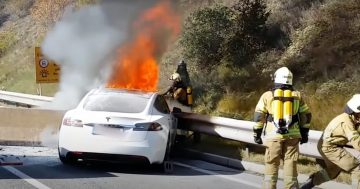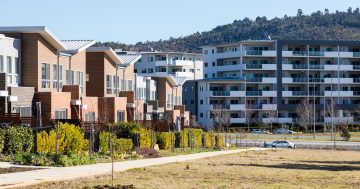Here at RiotACT we have long noted that while the ACT Government talks a big game on greenhouse emissions, loves being photographed with the bright young things of the AYCC, and is partial to appointing friends to steering committees and advisory panels, there isn’t actually a plan to do anything about it until just after the next election.
When presumably they hope the public will forget its indignation over the long four years to the next election.
Today the Greens have noticed that despite the fine words and photo ops the ACT’s actual emissions (or as actual as this dirty vague business gets) have gone up:
The annual review of the ACT’s greenhouse emissions has indicated that after a brief pause in 2008, the ACT’s emission continued on their upward journey in 2009.
“It’s disappointing, but not surprising that we haven’t seen a significant turnaround in the ACT’s emissions,” said Shane Rattenbury MLA, Greens spokesperson for Climate Change.
“The ACT has yet to really grasp the policies that we need to really turn this pathway around, so there is a lot of work to do on energy efficiency, public transport and greener electricity sources.”
The ACT’s electricity emissions, which account for 63% of our total emissions, declined slightly in 2007, but have then continued to increase again in 2008 and 2009.
The aspiration’s what’s important to the polar bears right?
Simon Corbell, however, takes a rosier view of the trends:
Key findings in the ACT Greenhouse Gas Inventory 2008-09 included:
— in 2008-09, the ACT’s net greenhouse gas emissions totalled 4,183 kilotonnes of carbon dioxide equivalent when emission reductions from land use, land use change and forestry are included and 4,206 kilotonnes of carbon dioxide equivalent when emission reductions from land use, land use change and forestry is excluded;
— there was a 1.3% increase in emissions from 2007-08 to 2008-09 (including emission reductions from land use, land use change and forestry); and
— per capita emissions peaked in 2006 at 12.3 tonnes, and in 2009 was 11.9 tonnes.To achieve the 2020 target of 40% reductions on 1990 levels, we must see a reduction in the Territory’s greenhouse gas emissions to 1,915 kilotonnes of CO2-e. The ACT needs to reduce emissions over the remaining 10 years by an average of 206 kilotonnes each year, or at an annual rate of 6.9% per annum.
Meanwhile the Liberals’ Zed Seselja is taking some joy in pointing out that the higher the numbers get before we start to act the more painful it’s going to be to meet the targets.
“This report highlights the gap between the rhetoric of ACT Labor/Greens Coalition to achieve a goal eight times higher than the national carbon tax goal, and the stark reality of increased emissions and much higher prices,” Mr Seselja said.
“The report states that total emissions are 2,268 kilotonnes greater than the 2020 target of 40 per cent reduction in 1990 levels.
“It is inescapable that more pain than expected is going to be inflicted to cut more emissions than expected. The question is – how is the ACT Labor/Greens Coalition going to do it and who is going to pay?
“In fact, based on the continued climb in emissions, it is reasonable to assume an even bigger than 40 per cent cut in total emissions will now be required to meet that target.
“Given that 63 per cent of all emissions come from electricity use, you have to wonder how much electricity prices will have to go up. Transport fuels account for 22 per cent – how much pain is going to be inflicted there?


















